The Nanakshahi Calendar is a calendar system used by Sikhs to determine the dates of important Sikh events and festivals. It was introduced by the Shiromani Gurdwara Parbandhak Committee (SGPC) in 2003 to commemorate the 300th anniversary of the birth of Guru Nanak Dev Ji, the founder of Sikhism.
The calendar is based on the 'Barah Maha' (Punjabi: ਬਾਰਹ ਮਾਹਾ) baanis in Guru Granth Sahib Ji, it translates as the "Twelve Months". There are two Barah Maha’s in Sri Guru Granth Sahib Ji. Both compositions compare the changes in nature and the seasons which are conveyed in the twelve-month cycle of the year to the spiritual progression of the soul. In the Nanakshahi calendar, the year begins with the month of Chet, with 1 Chet corresponding to March 14th
The Nanakshahi Calendar is widely used by Sikhs around the world to determine the dates of religious observances, such as Gurpurb (birth anniversaries of the Sikh Gurus), festivals, and other important Sikh events. It provides a standardized system for Sikh communities to celebrate and commemorate their religious heritage.
The Nanakshahi Calendar consists of twelve months. The months are as follows:
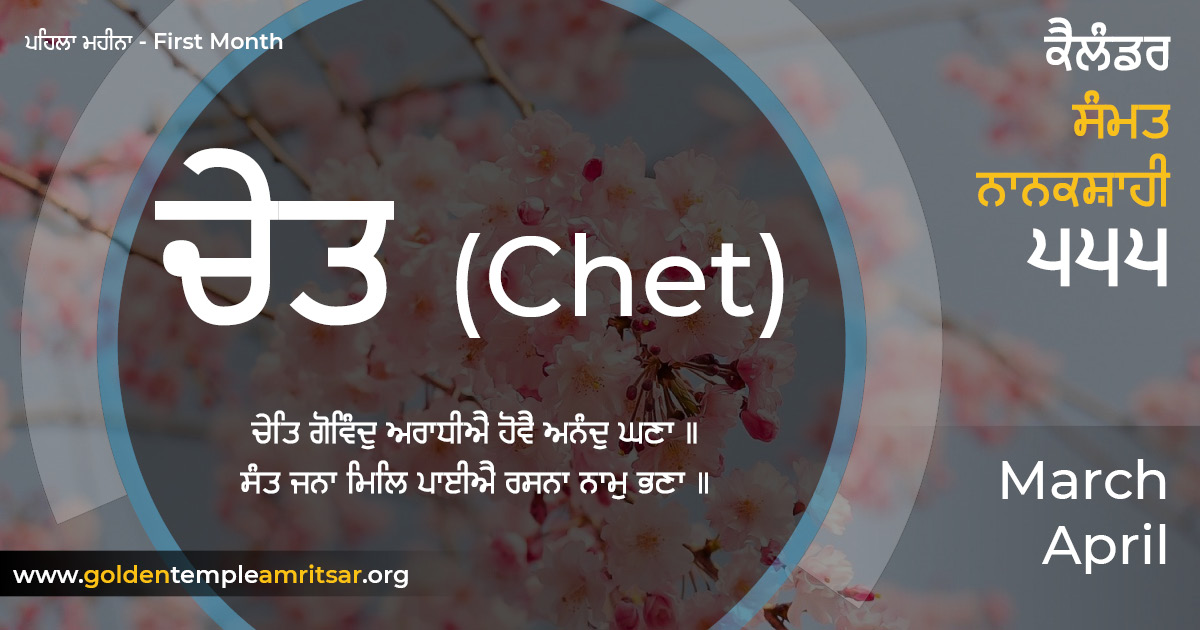
In the Nanakshahi calendar, the month of Chet falls in the spring season and corresponds to the months of March and April in the Gregorian calendar. Chet is the first month of the Nanakshahi calendar and marks the beginning of the Sikh New Year.

In the Nanakshahi calendar, the Vaisakh month typically begins around April and ends around May.
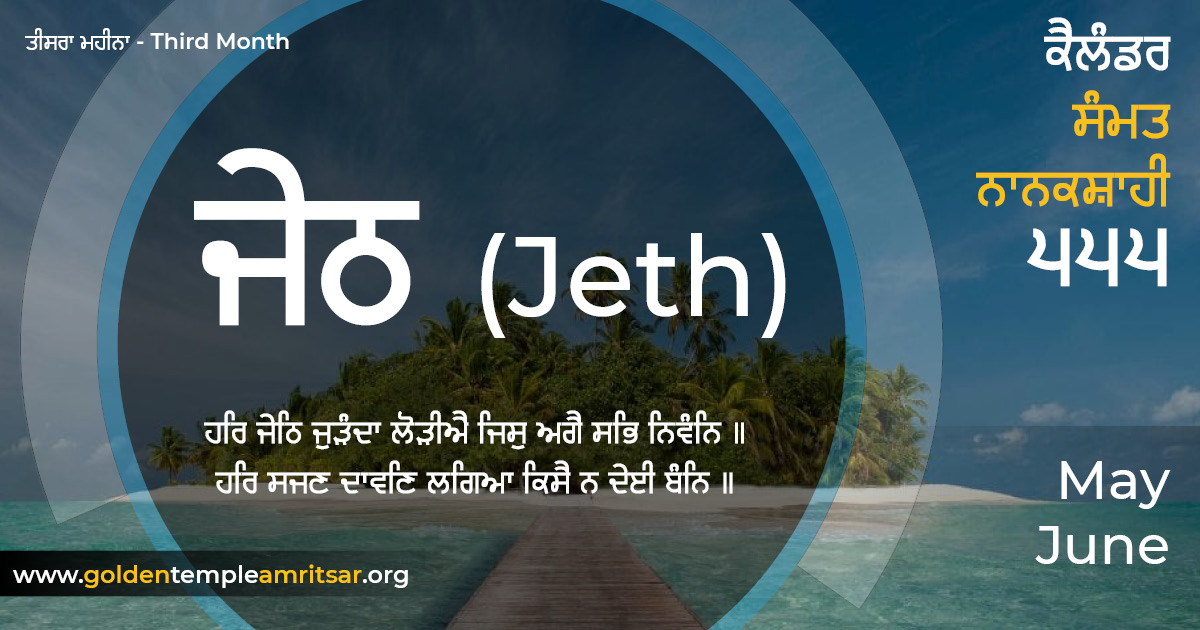
In the Nanakshahi calendar, the Jeth month corresponds to the third month of the calendar and falls roughly between May and June in the Gregorian calendar.
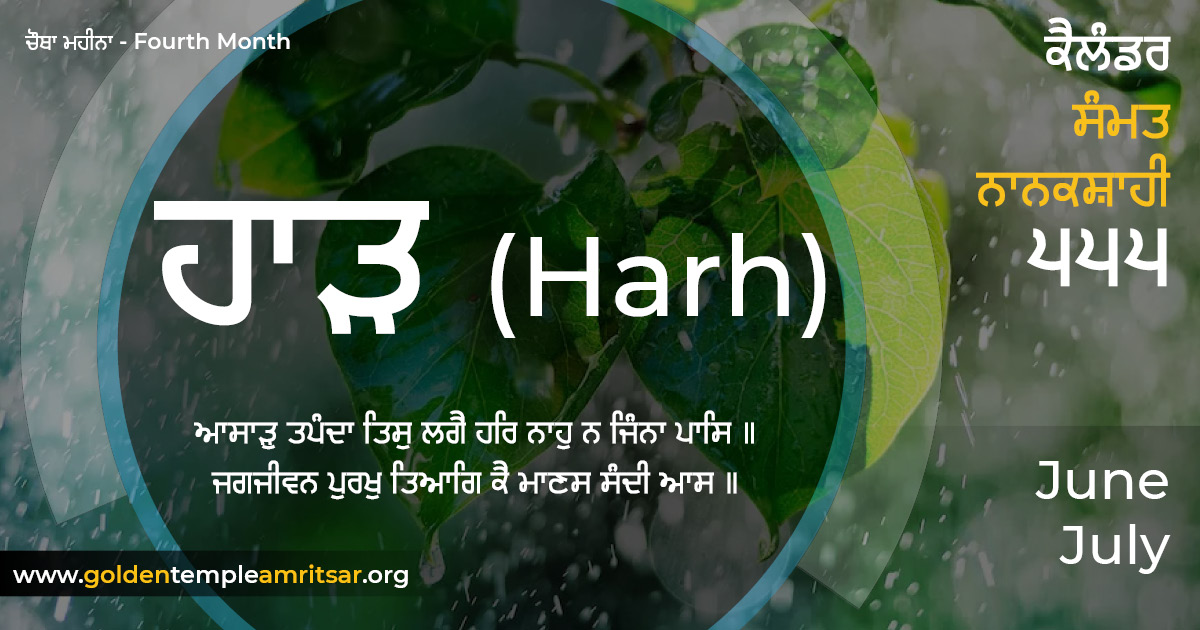
According to the Nanakshahi calendar, the Harh month is the fourth month of the calendar. Harh falls between June and July in the Gregorian calendar.
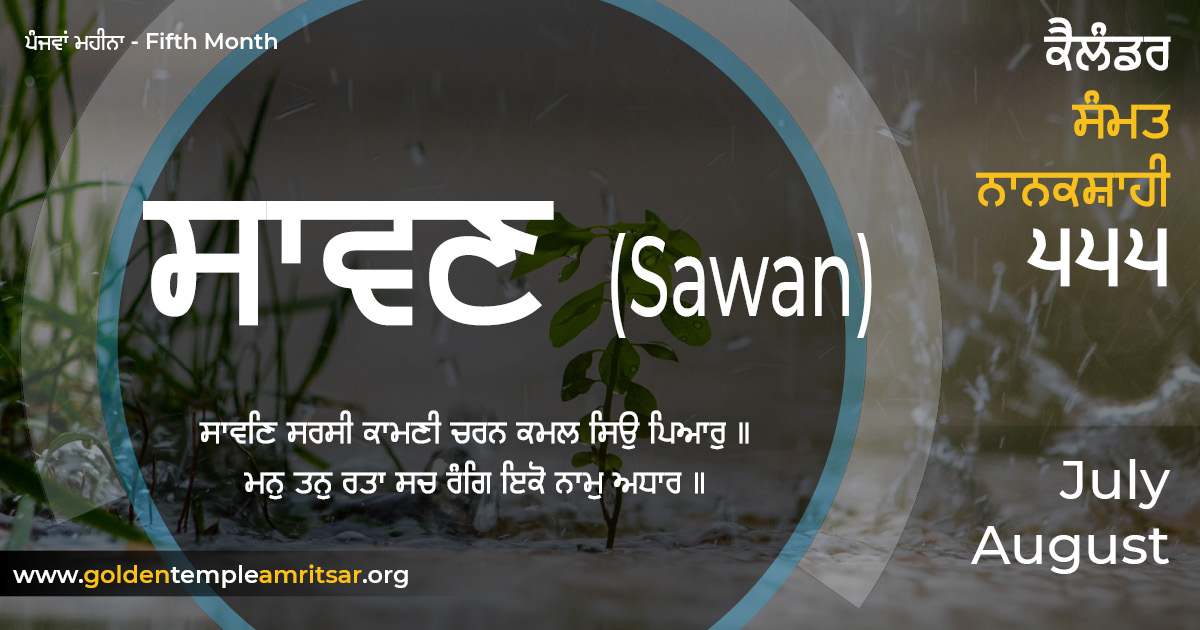
In the Nanakshahi calendar, the month of Sawan falls during the monsoon season in the Gregorian calendar months of July and August. It is the fifth month of the Nanakshahi calendar.
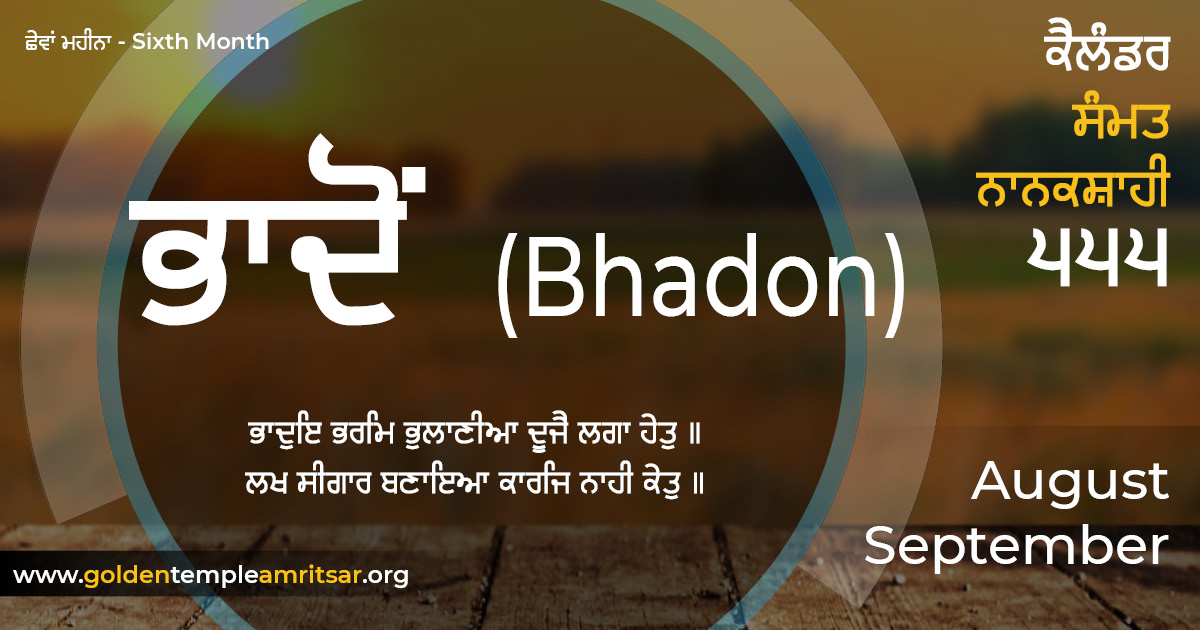
The Bhadon month is one of the twelve months in the Nanakshahi calendar and usually falls between August to September in the Gregorian calendar. It is the Sixth month of the Nanakshahi calendar.
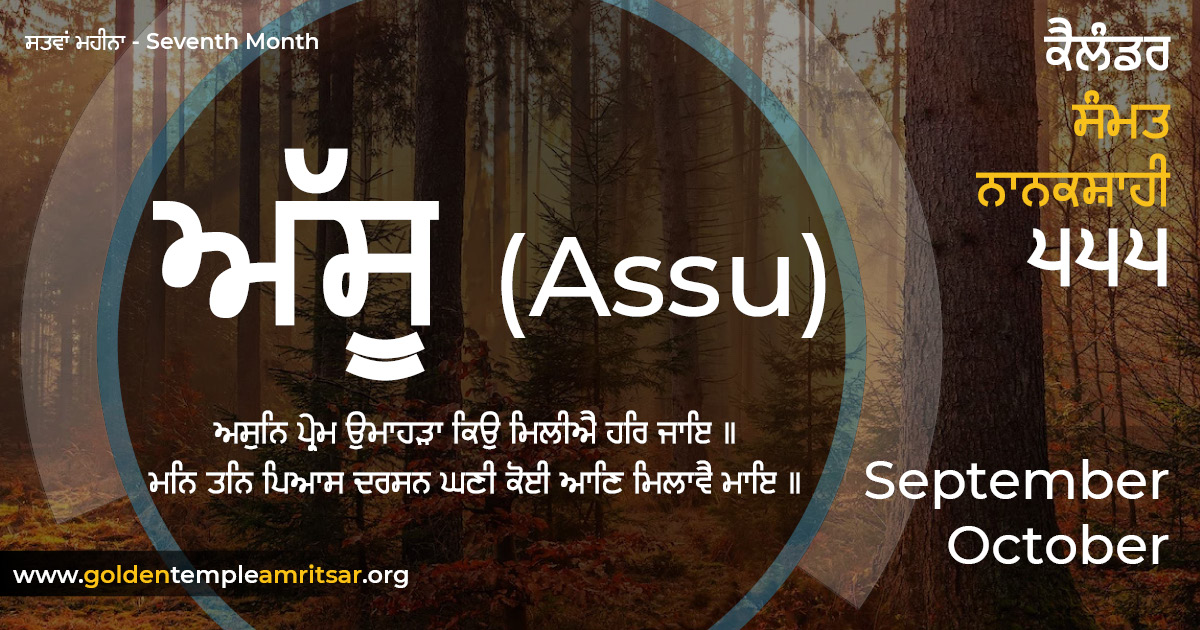
In the Nanakshahi calendar, the Assu month corresponds to the period from mid-September to mid-October in the Gregorian calendar. It is the seventh month of the Nanakshahi calendar.
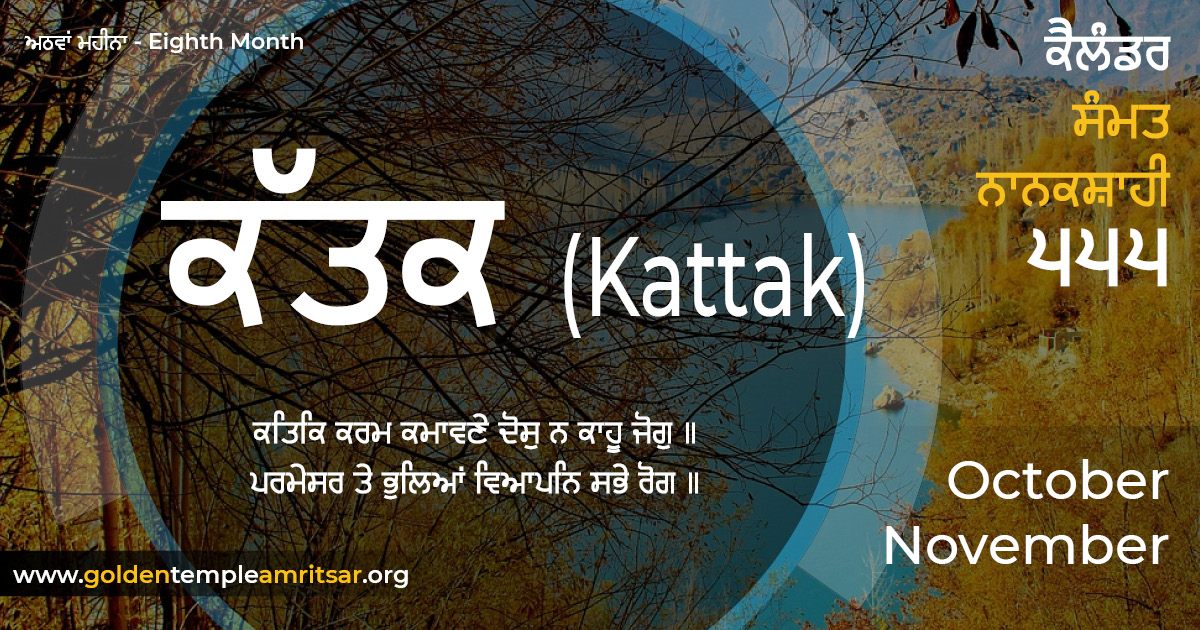
In the Nanakshahi calendar, the month of Kattak falls between the months of October and November in the Gregorian calendar. Kattak is the eighth month of the Nanakshahi calendar and usually begins around mid-October and ends around mid-November.
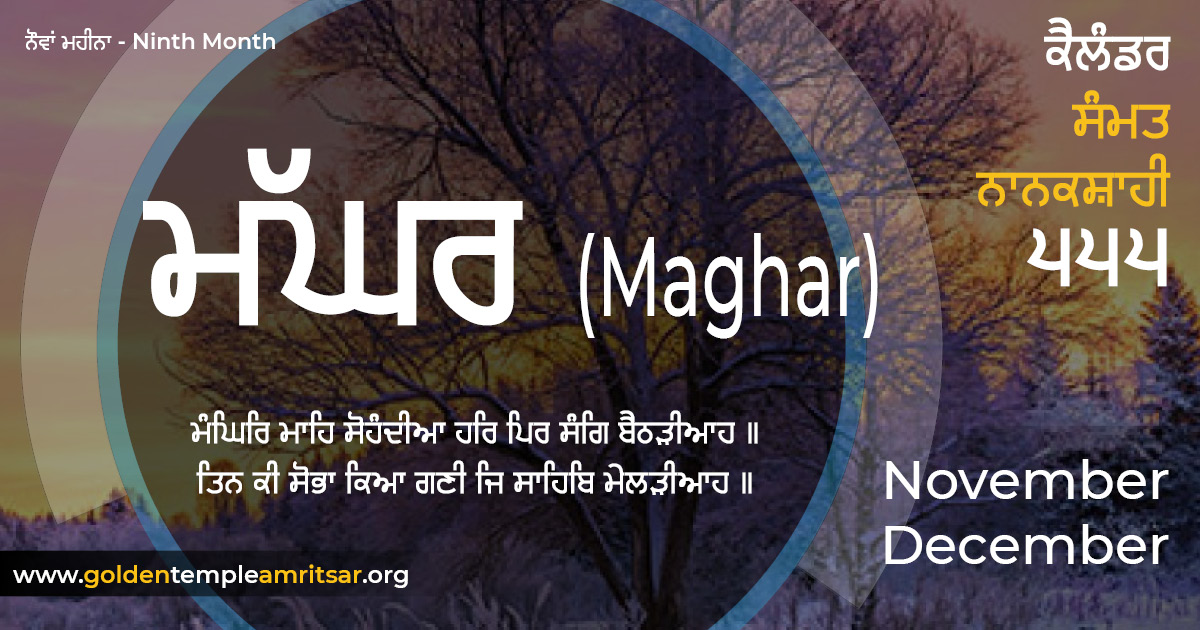
Maghar is the ninth month of the Nanakshahi calendar. In the Nanakshahi calendar, the month of Maghar falls between November and December in the Gregorian calendar. It begins around mid-November and ends around mid-December
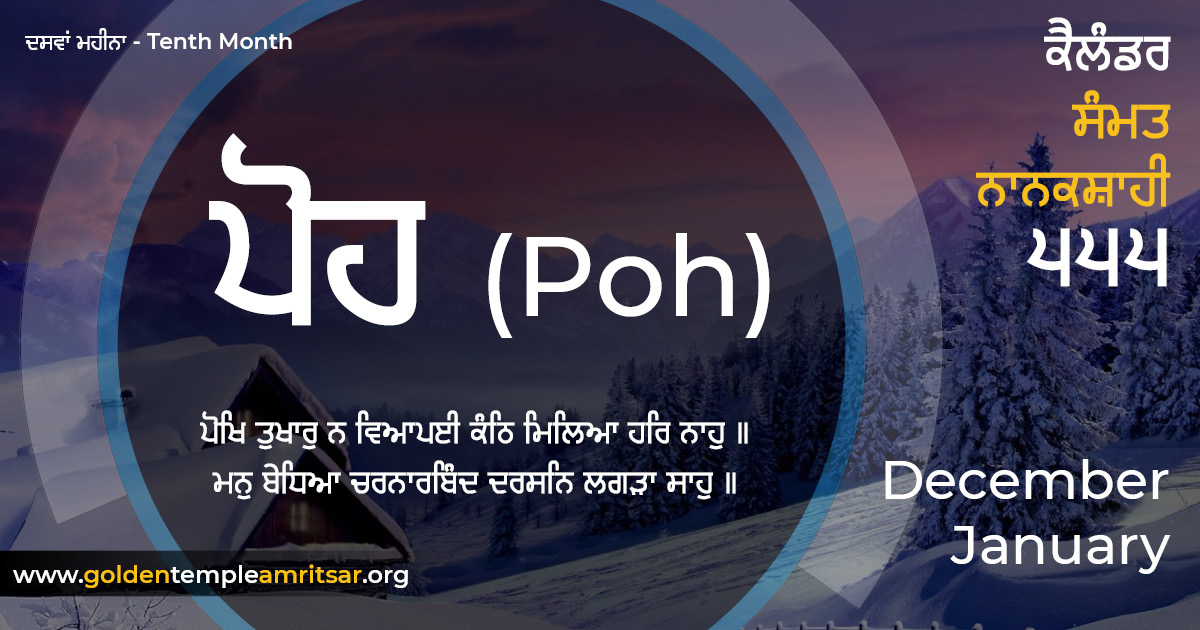
Poh is the tenth month of the Nanakshahi calendar. In the Nanakshahi calendar, the month of Poh falls between mid-December and mid-January in the Gregorian calendar. It typically starts around December 15th and ends around January 14th.
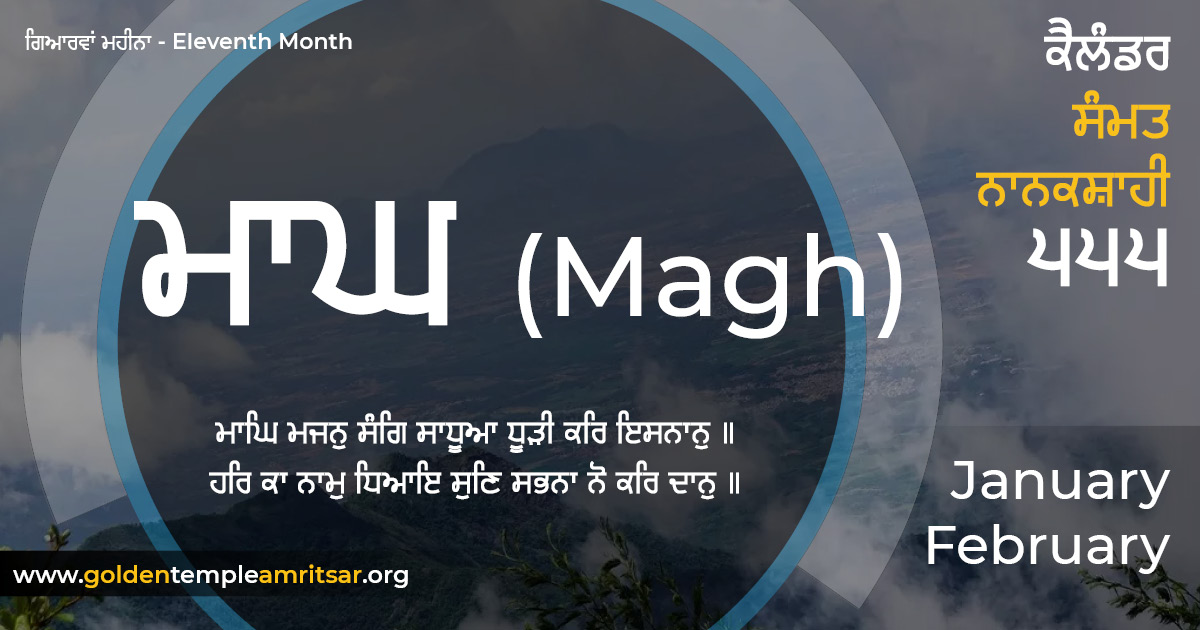
Poh is the tenth month of the Nanakshahi calendar. The Magh month in the Nanakshahi calendar typically falls between January and February in the Gregorian calendar. It is the eleventh month of the Nanakshahi calendar and spans from around mid-January to mid-February.
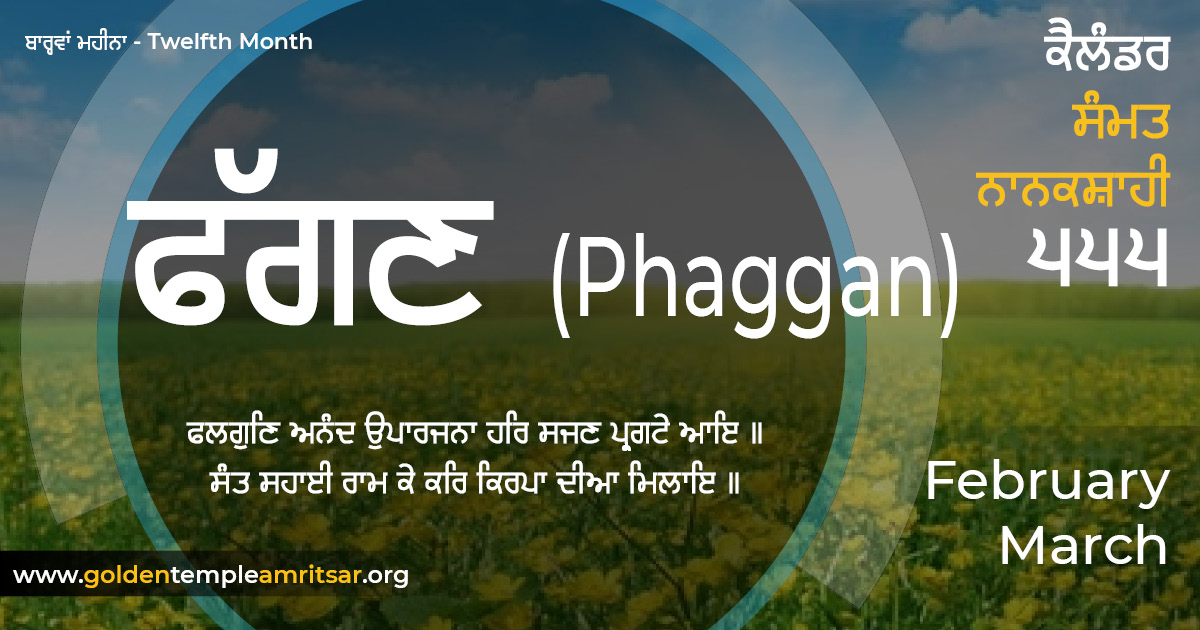
Phaggan is the twelfth month of the Nanakshahi calendar. In the Nanakshahi calendar, the month of Phaggan falls in the spring season and generally corresponds to the period from mid-February to mid-March in the Gregorian calendar.